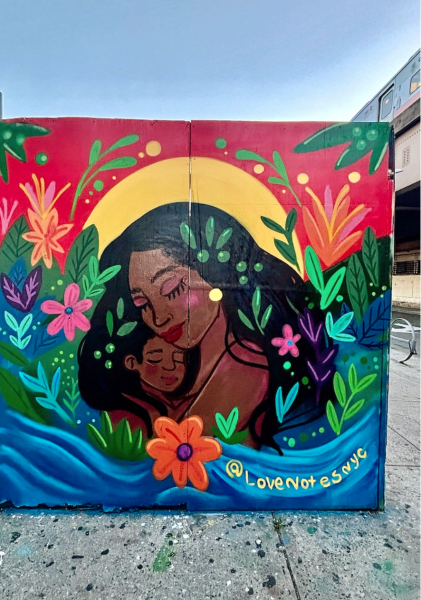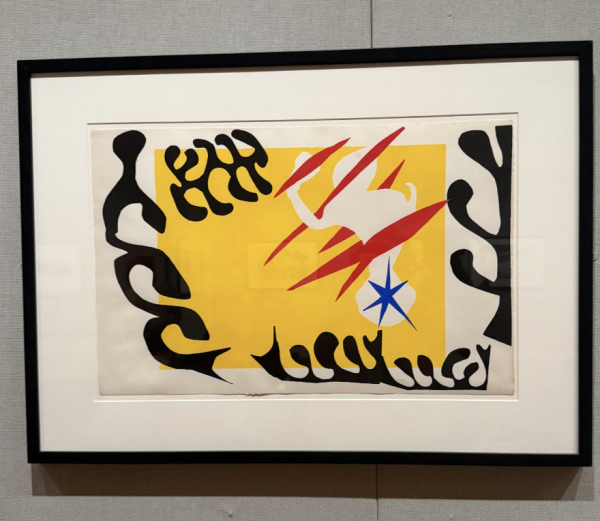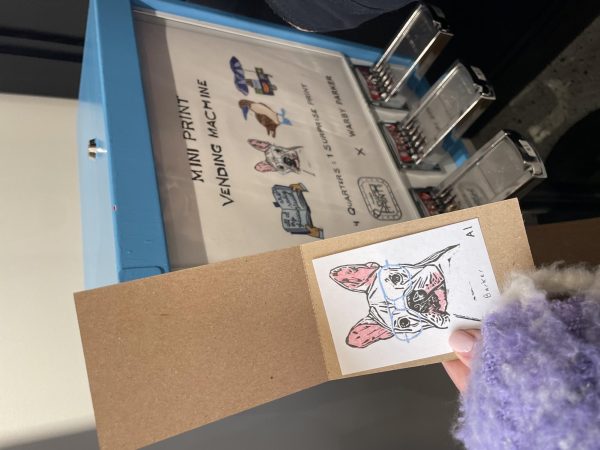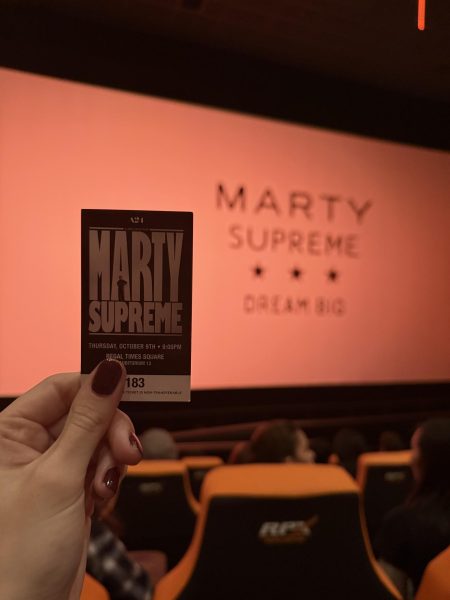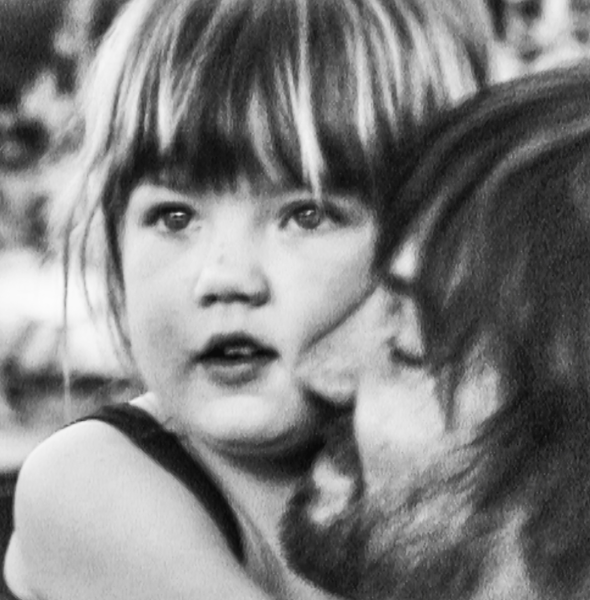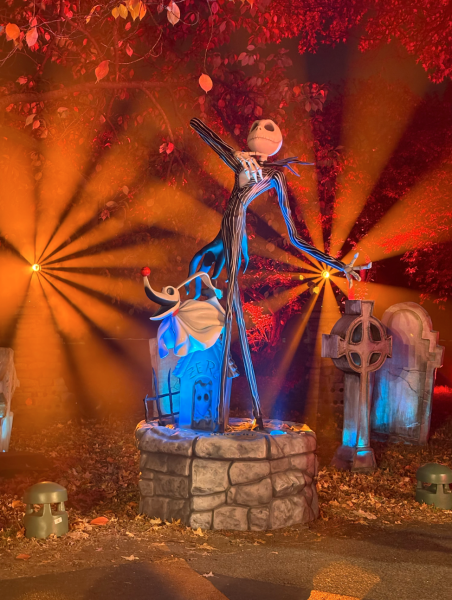Shellyne Rodriguez Brings the Bronx to Life in Vibrant Online Exhibit
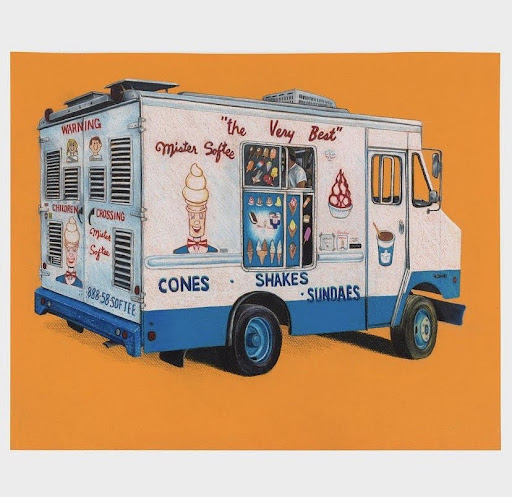
Shellyne Rodriquez’s “80 Blocks From Tiffany’s” exhibit pays kaleidoscopic homage to the Bronx. (Courtesy of Instagram).
Imbued with grit and stamina, Shellyne Rodriguez brings the entity of the Bronx to unadulterated technicolor life in “80 Blocks From Tiffany’s: The Insistence of Life on the Periphery of Empire.” This online exhibit by artist, community organizer, educator and writer Shellyne Rodriguez is available through the Bronx Museum of the Arts as a kaleidoscopic homage to New York City’s northernmost borough. You can view the exhibition here.
Perusing the exhibition, we first find ourselves under the guarded gaze of young men on the Pugsley Avenue stoop in “Neighborhood Watch.” Our ears nearly buzz with the sound of the Cross Bronx expressway, deeply striated by delivery boys on their bikes. Mr. Softee fills the streets with a familiar sweetness as women roll a winning 4, 5, 6 in a game of Ceelo. Yet, beneath street level and oil on canvas, Rodriguez paints a narrative of the unabashed sense of survival that persists against subjugation and erasure. Her raw depictions of still life, neighbors and families are an homage to the stewardship of communities within the Bronx — there is no room for voicelessness despite speculation and displacement from beyond its city borders.
“Hillary Paints a Banner” is a colored pencil depiction of the FTP3 protests in the Bronx. Upon release of the movie “Joker,” many flocked to the step street connecting Shakespeare and Anderson Avenues on West 167th Street where Joaquin Phoenix made his descent into villainhood. As tourists began to congregate, the “Joker Stairs” became a scourge for Bronx natives. Contributing to Rodriguez’s grand narrative of identity erasure, “Hillary Paints a Banner” is a critique of the hypocritical gentrification and reappropriation of criminalized ethnic communities.
“Neighborhood Watch” and “Uptown Vinyl Supreme,” in all their candid splendor, are archives of conversation on the streets of the Bronx. Though the former is initially mundane in appearance, the viewer falls under its gaze as if they were walking past the stoop themselves. They conduct their own surveillance, self-made and maverick. Perched on the “periphery of the empire,” those who come and go are kept under a watchful eye. The stoop itself has transcended it’s architectural confines — it’s a safe haven, a soapbox and a piece of real estate for fortuitous friendships. Similarly, “Uptown Vinyl” immerses us in the communion of music. Rich in Hip Hop and Rap history, through this archiving of local deejays “Uptown Vinyl Supreme” is an ode to music as a way of life. A mosaic of cultures, the population boom in the 1960s led to the whimsical fusion of Black and Latino influences. From immigrants to the youth cultivating playlists for apartment parties, Hip Hop became a means of creating art forms as defiance in the face of those who wanted to silence them. Music has leveled the playing field for people of color, a message that echoes as we hear Afrika Bambaataa booming in passing cars and samba jazz within the windows of bodegas.
“May we outlive our oppressors,” Rodriguez writes in her description for “Three Card Hustle.” Grit is an underlying motif in the artist’s canon, a quality that manifests itself into the daring and unabashed navigation of life that’s absolutely necessary for survival. Lisa Ortega, a Nuyorican community organizer for Take Back the Bronx is depicted rolling a 4, 5, 6 — the winning numbers for a game of Ceelo. Poised at the table, she contemplates the dice before her as she brandishes a switchblade. The next roll may not be as lucky, as Rodriguez writes, “… she is a survivor and a fighter and has had to navigate a life where the stakes have been high.” Despite the odds, she braces herself from within the walls of her pre-war apartment. Full of life, the underground economy is lived through street-card games on the block. “Three Card Hustle” is a silent celebration of the ingenuity in these diverse communities. Though varied in archetypes, the locals are united by a sense of street smarts and awareness that has become a character of its own.
Poised yet visceral, sampled and remixed, Shellyne Rodriguez’s depiction of the Bronx is a narrative like no other. Rooted in intimacy, she creates a portrait of the borough through the voice of its inhabitants and still life. Healing, breaking, fighting — the Bronx is an emblem of those who simultaneously survive and live with unabashed vibrancy.
Ilaina Kim is a senior from Atlanta pursuing a major in English with a minor in philosophical studies. She joined The Fordham Ram as an Assistant Editor...



































































































































































































